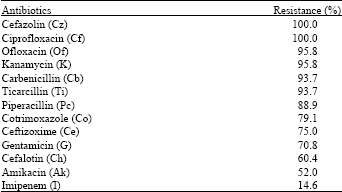Research Article
Antibacterial Effects of Iranian Fennel Essential Oil on Isolates of Acinetobacter baumannii
Department of Microbiology, Immunology and Genetics, Faculty of Medicine, Urmia University of Medical Sciences, Urmia, Iran
M. Zartoshti
Department of Microbiology, Immunology and Genetics, Faculty of Medicine, Urmia University of Medical Sciences, Urmia, Iran
H. Babazadeh
Department of Microbiology, Immunology and Genetics, Faculty of Medicine, Urmia University of Medical Sciences, Urmia, Iran
N. Ali-daiee
Department of Microbiology, Immunology and Genetics, Faculty of Medicine, Urmia University of Medical Sciences, Urmia, Iran
S. Zarrin
Department of Microbiology, Immunology and Genetics, Faculty of Medicine, Urmia University of Medical Sciences, Urmia, Iran
S. Hosseini
Department of Microbiology, Immunology and Genetics, Faculty of Medicine, Urmia University of Medical Sciences, Urmia, Iran










